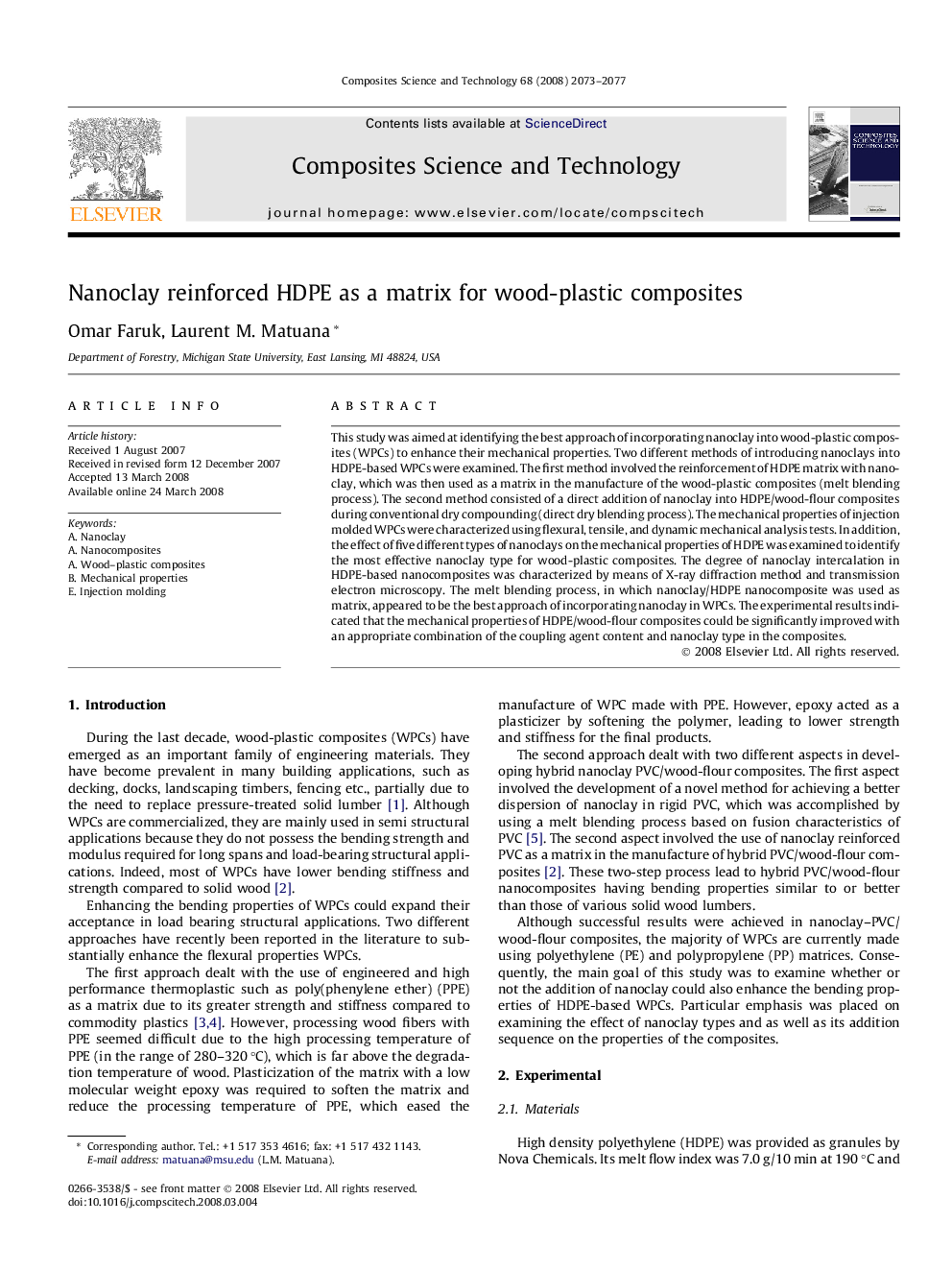| Article ID | Journal | Published Year | Pages | File Type |
|---|---|---|---|---|
| 822461 | Composites Science and Technology | 2008 | 5 Pages |
This study was aimed at identifying the best approach of incorporating nanoclay into wood-plastic composites (WPCs) to enhance their mechanical properties. Two different methods of introducing nanoclays into HDPE-based WPCs were examined. The first method involved the reinforcement of HDPE matrix with nanoclay, which was then used as a matrix in the manufacture of the wood-plastic composites (melt blending process). The second method consisted of a direct addition of nanoclay into HDPE/wood-flour composites during conventional dry compounding (direct dry blending process). The mechanical properties of injection molded WPCs were characterized using flexural, tensile, and dynamic mechanical analysis tests. In addition, the effect of five different types of nanoclays on the mechanical properties of HDPE was examined to identify the most effective nanoclay type for wood-plastic composites. The degree of nanoclay intercalation in HDPE-based nanocomposites was characterized by means of X-ray diffraction method and transmission electron microscopy. The melt blending process, in which nanoclay/HDPE nanocomposite was used as matrix, appeared to be the best approach of incorporating nanoclay in WPCs. The experimental results indicated that the mechanical properties of HDPE/wood-flour composites could be significantly improved with an appropriate combination of the coupling agent content and nanoclay type in the composites.
